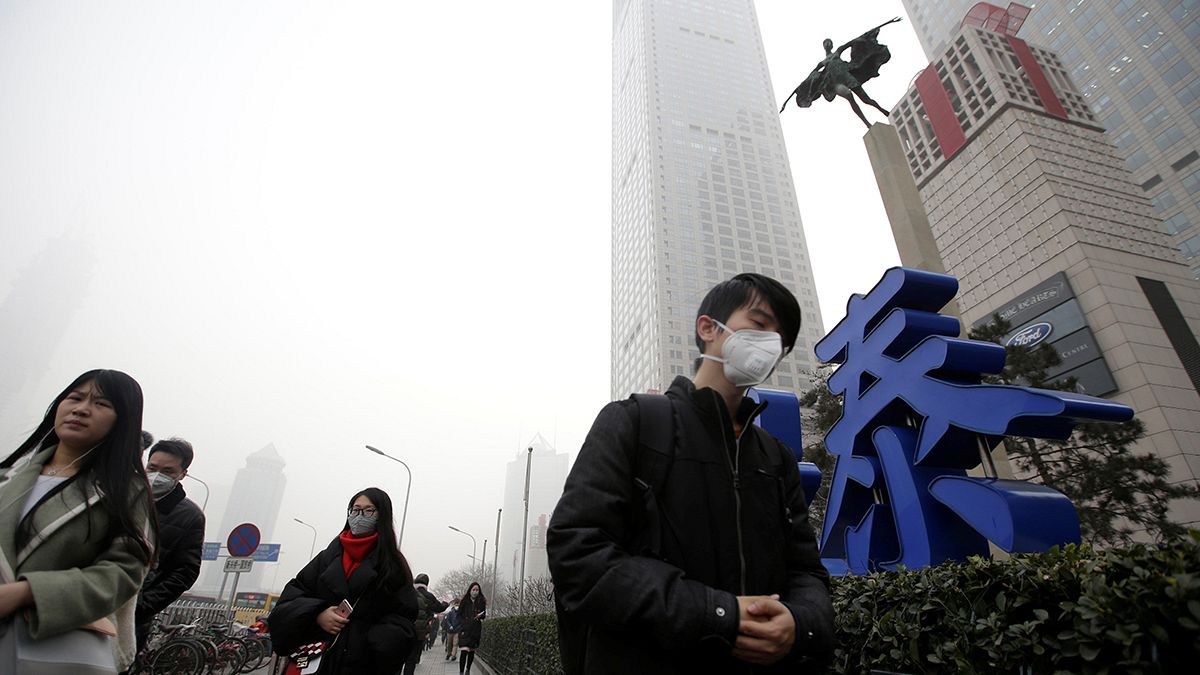From the dizzying heights of a skyscraper in Beijing, the scale of China’s pollution problem becomes apparent.
From the dizzying heights of a skyscraper in Beijing, the scale of China’s pollution problem becomes apparent.
The north of the country was shrouded in hazardous levels of smog for a fifth day, disrupting flights, traffic and closing factories and schools.
Hundreds of inspectors were out to enforce temporary bans on barbecues and ensure cars with even number plates were the only ones on the road.
With plunging temperatures, the pollution goes up as power and heating demands rise in the winter months.
The sheer volume of pollution highlights the environmental cost of resurgent coal production in the world’s second largest economy.
“Clearly the government is not trying to hide this away. Everybody is talking about the pollution, the Premier minister (Li Keqiang) has called for a war against pollution and there are very many investments going into making the air better. However, what we see today are the consequences of the sins of probably a whole generation – of development, fast development, which clearly did not have the environment at its centre,” explained Dr Bernhard Schwartlander from the World Health Organisation.
Truly astonishing that today we can have this level of pollution. You literally cannot see 10 feet outside of the train. #Chinapic.twitter.com/Zes00mIeGB
— Tom Dowd (@TomDowdCGN) December 20, 2016
Millions of people are at risk of suffering from the effects of airborne pollutants, which were up to 100 times higher than the safe limit in some regions.
“I’m worried about (the pollution) as there are so many (pollution) particles (in the air). Unlike the old times when I was a kid, it was just fog, not smog,” remarked one Beijing local to a reporter.
One study linked pollution in China to 1.6 million deaths per year. The US Environmental Protection Agency states the dangers of airborne pollutants:
“People exposed to toxic air pollutants at sufficient concentrations and durations may have an increased chance of getting cancer or experiencing other serious health effects. These health effects can include damage to the immune system, as well as neurological, reproductive (e.g., reduced fertility), developmental, respiratory and other health problems.”
The issue is weighing heavily on the government as it prepares to host the Winter Olympics in 2022.
“I think the measures (the government has taken) should be comprehensive. (The measures) should not only focus on shutting down factories and limiting cars when a red alert is issued. This measure can only scratch the surface (of the problem). I think they should change the economic development structure,” said one Beijing resident.
The transition away from coal power is a slow one. It will take years before the benefits of measures taken to quell the so-called airpocalypse have an effect, in the meantime millions are paying for the cost of China’s economic growth with their health.
